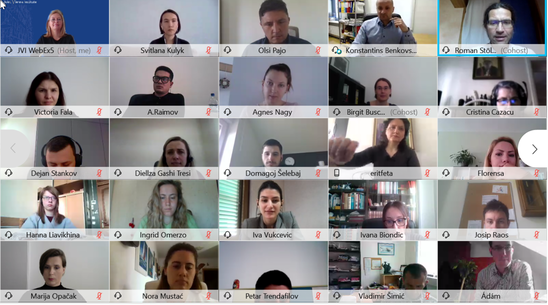Competitiveness: From a “Dangerous Obsession” to a Useful Guidance for Policy
May 04, 2021

iStock.com/Eoneren

From March 1 to 12, 2021, the JVI in collaboration with the Vienna Institute for International Economic Studies (wiiw) organized a 2-weeks training course on Competitiveness, Growth, and Crisis. Due to the pandemic, the 2021 edition of the event was delivered virtually. Tailored to the needs of government officials, staff from central banks and various other public institutions from Central, Eastern and Southeastern Europe as well as the Caucasus and Central Asia, the seminar covered a broad range of topics related to international competitiveness, economic growth and periods of crises, including the current COVID-19-inflicted crisis.
The introductory session was dedicated to the key concepts and the 37 course participants, which came from 17 different countries. The participants learned why studying the issue of competitiveness need not be a “dangerous obsession” (as argued by Paul Krugman in 1994) but can provide useful guidance for industrial policy as well as broader structural and growth policies.
The course comprised three types of sessions. At the core were lectures delivered by distinguished experts in the field coming from both the wiiw as well as from international organizations and other research institutions. These sessions dealt with the “classic” elements in the discussion of competitiveness and growth, such as productivity, but also discussed more recent issues, including the highly relevant domain of global value chains. The lectures were supplemented with in-depth training sessions which invited participants to apply the concepts learned and to calculate some of the discussed indicators themselves. The program was rounded off by participants’ presentations. In these sessions, volunteers could bring in their own knowledge and experience in the field. The presentations covered a wide range of highly interesting topics ranging from smart specialization strategies in Albania to changes in Georgia’s trade and customs procedures.
Key insights from these sessions included but were not limited to the following aspects:
- Productivity is a key driver of competitiveness at the firm, industry and country level. The identification and interpretation of productivity, in particular total factor productivity, is not always straightforward though, and there are still a number of remaining challenges in measuring productivity.
- Wherever possible, the quintessential analysis of price competitiveness is to be complemented with an analysis of non-price factors.
- Constraints to competitiveness and growth can also lie outside the usual suspect areas. For example, within-country inequality, including inequality in opportunities, can reduce the chances for sustained growth. More generally, the broader social and institutional characteristics remain a crucial determinant of competitiveness.
- The study of global value chains (GVC) provides new insights in countries’ positions in the ever more granular international division of labor. In particular, GVC analysis can reveal, much better than previously, the origins of value added and hence the value captured by countries and industries. The evidence discussed suggests, for example, that large parts of Central and Eastern Europe should closely monitor the value chains’ functions they occupy within the European production networks. Functional upgrading may hold the key for this region to improve their competitive position and to avoid growth traps.
- The “rediscovery” of industrial policies as a tool to foster competitiveness and growth provides numerous opportunities. It was forcefully and convincingly argued that combining the three pillar of competitiveness—resources, innovation and regulation—with enterprise, sector and framework policies cover the entirety of the potentially vast field of industrial and competitiveness policies. Also, all countries are well-advised to make use of promising new approaches to industrial policies and may want to experiment with smart specialization strategies or with defining industrial missions to support structural change and to accelerate growth.
The closing session was dedicated to the numerous impacts the COVID-19-related economic crisis had on economic growth in Central, Eastern and Southeastern Europe and their competitive positions. Taking into account the unusually high degree of economic uncertainty, the likely long-term implications for growth and convergence were addressed. Despite the existing challenges, among them a cyclical decline in labor productivity, there were clear signs of recovery both in industrial production and retail sales. The recovery may be quite uneven across the region though.
Roman Stöllinger, wiiw











